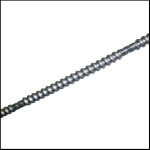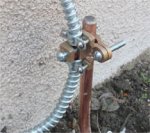Inyoinspector
Member
- Location
- Bishop, Ca USA
Hello all,:bye: I'm a new building inspector and want to do my job as best as possible. We have some controversy in regards to the need to bond the shielding at the ground clamp to rod connection. When running two ground rods with shielded grounding wire do you need 2 clamps at the first rod in order to continue the bonding of the shielding material between the two rods or is the contact of the shielding to the wire sufficiently bonded? I apologize in advance if this is a silly question, but being new to this job I want to provide the correct answer to the contractors of the area. Thank you



